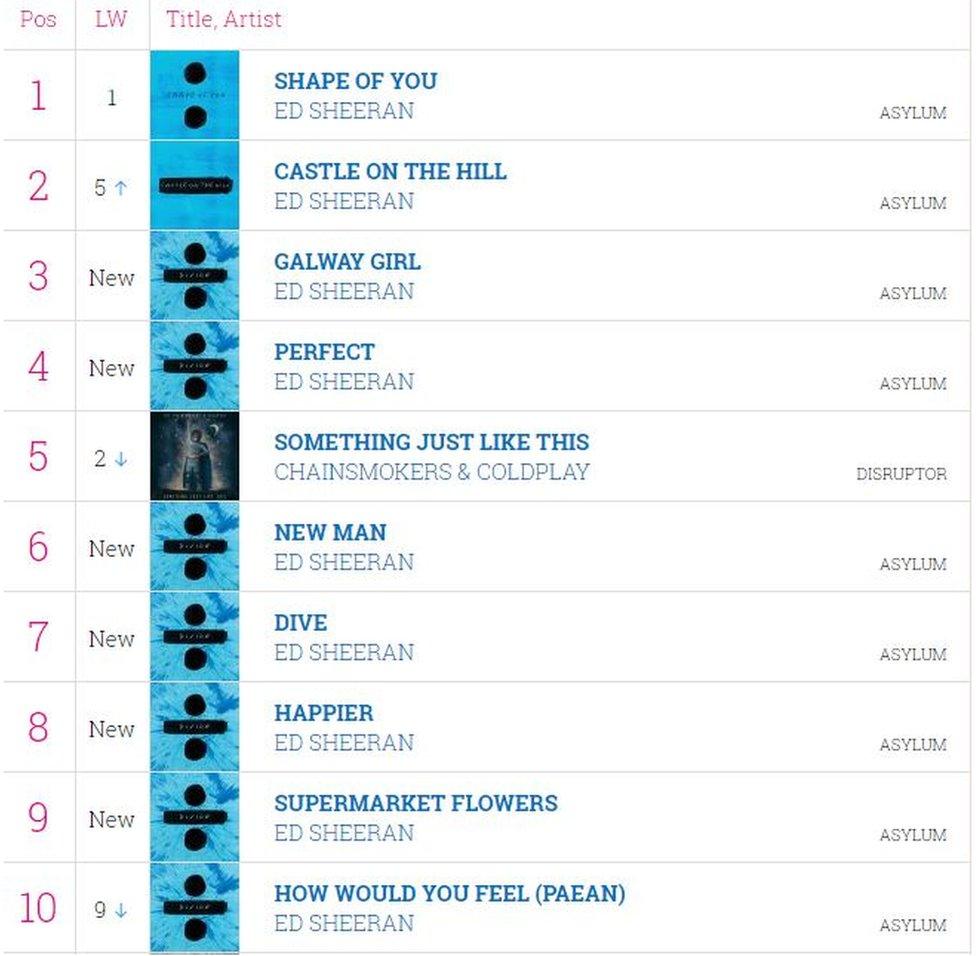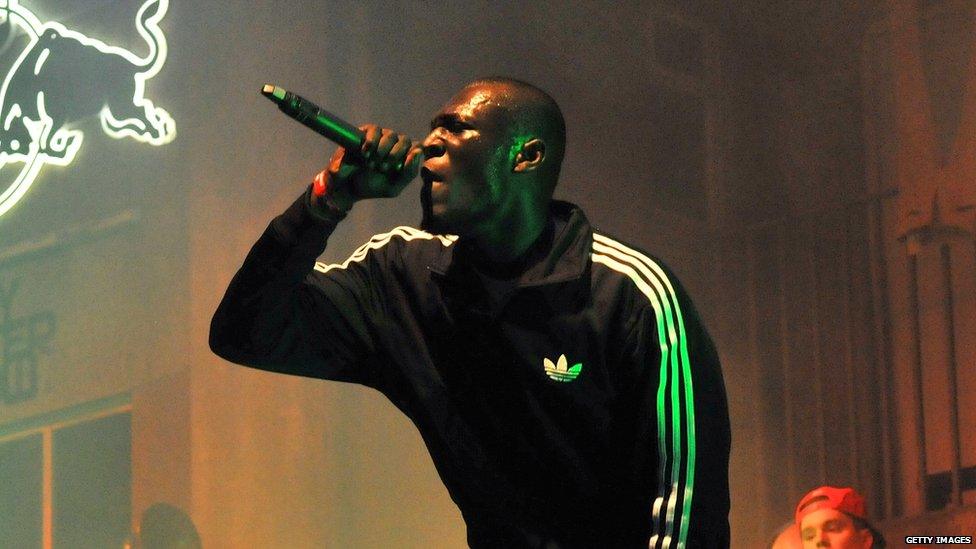Official Singles Chart rules are changing to help new bands break through
- Published

The rules of the Official Singles Chart are changing.
It's after streams on sites like Spotify meant Ed Sheeran managed to get 16 tracks from one album into the top 20 earlier this year.
From now on acts will be limited to having three songs on the chart at any one time. There are also new rules about streaming.
The people behind the changes argue they will make it easier for new bands to get noticed.

Greg James presents the Official Singles Chart on Radio 1 on Friday afternoons
At the moment, the chart is calculated through a combination of physical sales, digital sales and streams - with 150 streams counting as one sale.
But the number of songs being streamed worldwide per week has doubled to 1.2 billion since January 2016.
In March, Ed Sheeran's ÷ became the first major album to exploit a flaw in the system - brought about by this growth in popularity.
Millions of people used services like Spotify and Apple Music to listen to the record from beginning to end. This meant every track on it made a significant dent in the singles chart.

Only Chainsmokers & Coldplay stood between Ed Sheeran and a perfect 10
The new rules, which come into effect on 7 July, are designed to keep the Official Singles Chart about singles - not album tracks.
From then, only an artist's most popular three songs will be allowed in the top 100.
There will also be a new ratio of streams to sales, 300:1, which will apply when a song's been in the chart for a number of weeks and is dropping in popularity.
This is designed to help new tracks work their way up the chart, without being inhibited by old album tracks which are past their peak.

Stormzy has also had multiple tracks in the top 40 recently
If you've not quite got your head around it, don't worry - these rules are pretty complicated.
But it says they should help the chart "reflect how fans are engaging with music in an increasingly streaming led world".
Tests suggest the changes should increase the number of chart artists by 20% and chart hits by 11%.
Find us on Instagram at BBCNewsbeat, external and follow us on Snapchat, search for bbc_newsbeat, external